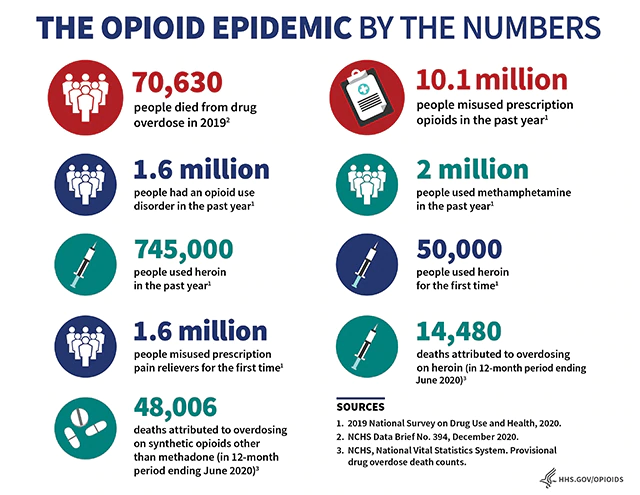What is the U.S. Opioid Epidemic?
- In the late 1990s, pharmaceutical companies reassured the medical community that patients would not become addicted to opioid pain relievers and healthcare providers began to prescribe them at greater rates.
- Increased prescription of opioid medications led to widespread misuse of both prescription and non-prescription opioids before it became clear that these medications could indeed be highly addictive.
- In 2017 HHS declared a public health emergency and announced a 5-Point Strategy To Combat the Opioid Crisis

Download the Opioid Epidemic in the U.S.
Understanding the Opioid Crisis
Opioid Crisis
Devastating consequences of the opioid epidemic include increases in opioid misuse and related overdoses, as well as the rising incidence of newborns experiencing withdrawal syndrome due to opioid use and misuse during pregnancy.
Opioid Overdose
Opioid overdoses accounted for more than 42,000 deaths in 2016, more than any previous year on record. An estimated 40% of opioid overdose deaths involved a prescription opioid.
Why do Adults Misuse Prescription Drugs?
Policymakers can use this information from the National Survey on Drug Use and Health to help inform substance abuse prevention and treatment needs in their communities.
